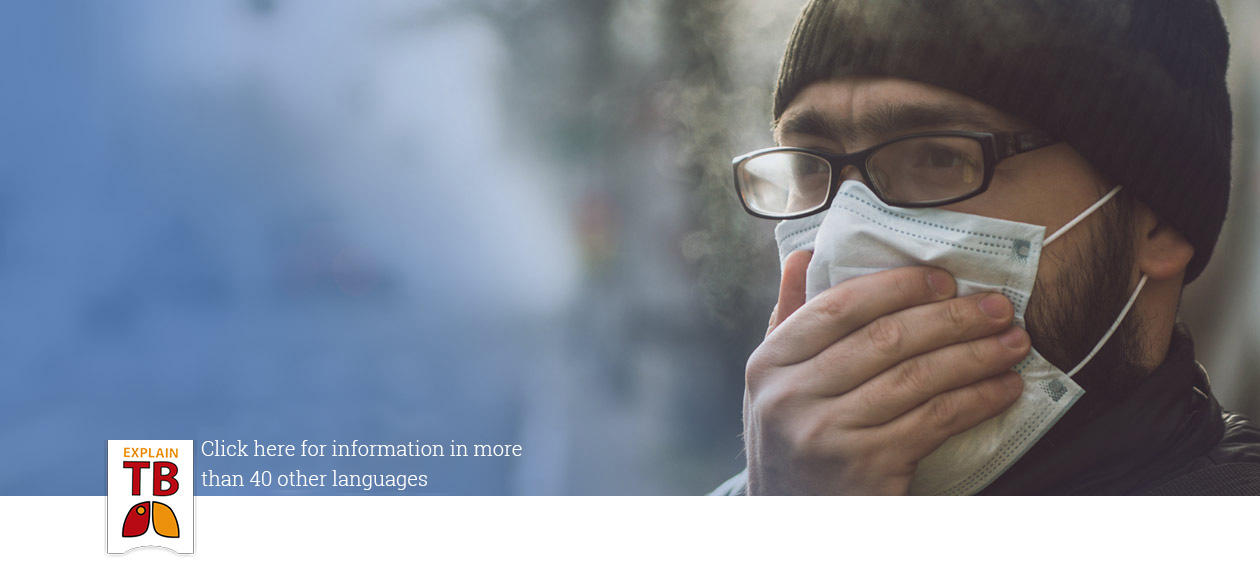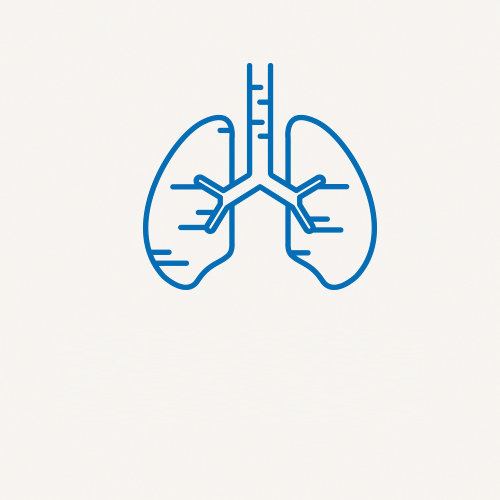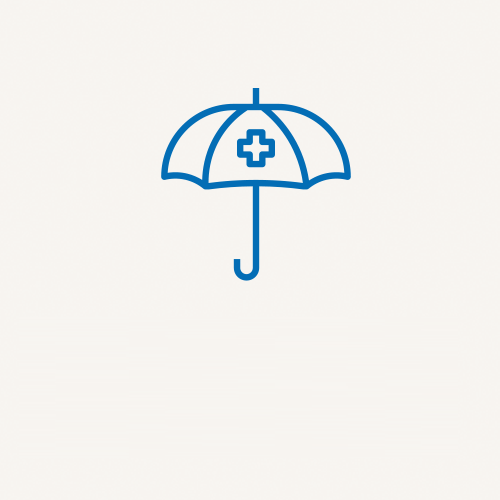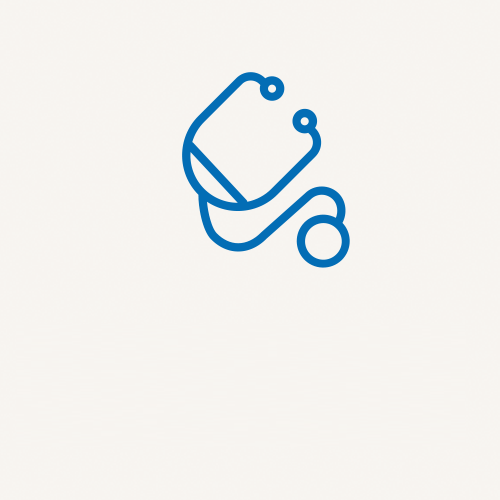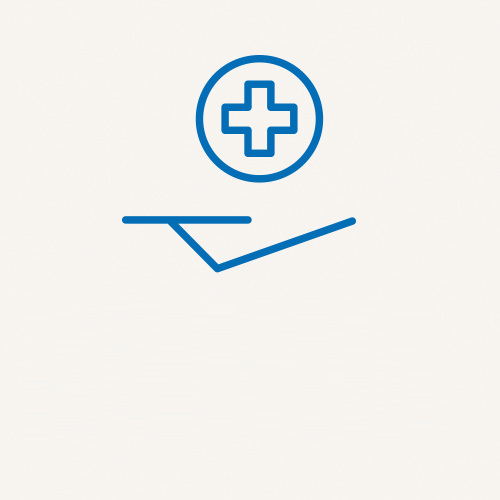Frequently asked questions about tuberculosis. (FAQs)
Treatment
Do I have to stay in hospital for the entire duration of the treatment?
Often, it is necessary to start therapy of tuberculosis in hospital. As long as tuberculosis is still contagious, you may only have contact with other people wearing a mouth and nose mask and you will be separated from other patients in the hospital. After the symptoms have improved and as soon as the medication is well tolerated, the treatment can usually be continued on an outpatient basis. The respective local health authority is then informed of the discharge, and a resident doctor can continue to supervise the treatment.
last updated April 2018
General information for the therapy
Tuberculosis is treated with a combination of different medications. In most cases, the disease can be cured without consequential damage. However, the treatment takes at least 6 months and requires a great deal of patience. You have to take a lot of tablets over these months. The therapy begins with the initial or intensive phase, which can last at least two months or longer. During this phase, at least four medications are given. This is followed by a maintenance phase of at least 4 months, during which less medication is required.
It is essential to take the medication on regular basis at the prescribed dosage. If possible, all tuberculosis medication should be taken together at least 30 minutes before breakfast, because the medication is more effective this way. If the tolerance is too bad, it can also be taken after a light breakfast or if that is not possible in the evening. If the tablets are not taken regularly, therapy may fail. The bacteria then begin to multiply again and can become resistant to the medication taken. This can lead to a more complicated and even longer treatment with poorer chances of recovery.
last updated April 2018
How is (drug-) sensitive tuberculosis treated?
In Germany, tuberculosis can usually be treated with the highly effective medication used in the standard therapy. At the beginning of the initial or intensive phase of the first 2 months, this consists of 4 drugs with the active ingredients isoniazid, rifampicin, pyrazinamide, and ethambutol. This is followed by a continuation phase of 4 months during which only isoniazid and rifampicin are given. In total, the standard therapy is finished after 6 months. In the case of particularly serious diseases, the continuity phase can be extended in order to reduce the risk of relapse. Through repeated examination of the sputum and X-ray or other examinations, the doctor assesses the success of the treatment and then decides, when the therapy should be ended. A relapse is rare and occurs at less than 5% of patients after completion of treatment. Nevertheless, it is important to undergo check-ups after the therapy so that a relapse is not overlooked.
If tuberculosis is drug-sensitive and can be treated with standard therapy, the therapy is successful in most cases. The prerequisite for this is the consistent intake of the correct dosage of the drugs over the entire duration of the therapy.
last updated April 2018
How is (drug-) resistant tuberculosis treated?
In the case of multi-drugresistant (MDR) tuberculosis, the two most commonly used drugs, rifampicin and isoniazid, are not effective against the tuberculosis bacteria. The disease with MDR tuberculosis bacteria is more difficult to treat. Less effective drugs with more side effects have then to be given. The therapy therefore can last 20 months or more. In special cases, the World Health Organization (WHO) also recommends a short therapy over 9–12 months. In Germany, however, there are only a few patients who are eligible for this short therapy. In Germany it is recommended to compose the MDR therapy individually after a detailed examination of the tuberculosis pathogen in the laboratory. The therapy of MDR tuberculosis is started in hospital to monitor the tolerability of the therapy. Intravenous drugs are sometimes necessary. Before being discharged, it must be ensured that MDR tuberculosis is no longer contagious. The sputum will therefore be regularly examined in the laboratory. Some cases of MDR tuberculosis must be treated in hospital for the entire period. Others can be treated on an outpatient basis. This highly depends on the individual case and the possibilities at the place of residence. It is always important to involve a specialist into therapy planning. The therapy must be taken consistently and for the necessary period of time. Otherwise, there is a risk, that the therapy will not lead to a cure, especially in the case of MDR tuberculosis. In rare cases that are difficult to treat, surgery can also be useful in addition to medication.
last updated April 2018
What is directly observed therapy (DOT)?
For the success of tuberculosis therapy, it is crucial that all drugs are taken daily over the entire recommended period. However, the therapy duration is long, and the therapy can cause side effects. This is a great challenge for every tuberculosis patient. If the attending physician sees problems with the regular intake of drugs, he or she can organise support. This can be realised by a home care service. Other health care workers or relatives can also support the treatment after a short training. This is then referred to as directly observed therapy (DOT). The monitored therapy is usually carried out at home. If necessary, trained personell at the local health authority office or in other facilities can help. The DOT aims to support patients, ensuring that all drugs are taken. In addition, direct observation helps to detect side effects of drugs at an early stage. Questions about the treatment can also be answered immediately.
last updated April 2018
How can patients themselves contribute to a cure?
Every tuberculosis patient can contribute to the cure by taking simple measures. For the success of tuberculosis therapy, it is crucial that all drugs are taken every day. This is the goal for the entire period of treatment. If any problems occur while taking the drugs, the therapy should not be interrupted without consulting your doctor. You should speak with your doctor as soon as possible and find a solution together.
Various other behaviours can support the therapy. You should try to live healthy, eat well, and get plenty of fresh air. Rooms should be ventilated regularly. In addition, recreational drugs and alcohol should be avoided. These affect the body’s own defences and increase the side effects of the drugs. If it is not possible to stop the consumption of drugs or alcohol without problems, the treating physician should be informed. In many cases, helpful support can be offered. Smoking also has a negative effect on therapy. If you manage to quit smoking, you will improve your chances of recovery.
Tuberculosis drugs can influence the effect of other drugs. All medications should therefore be checked for interactions. Contraceptives like “the pill” may also be less effective under tuberculosis therapy.
last updated April 2018
What does it mean to be HIV positive in addition to having tuberculosis?
In case an HIV infection is present in addition to tuberculosis, the HIV infection must also be treated. This requires additional medications, some of them can be taken as a single tablet. Because HIV weakens the immune system, the treatment of HIV is extremely important for tuberculosis treatment to be successful. Vitamine B6 is additionally administered. The HIV medication can interfere with the tuberculosis drugs. The time at which HIV therapy is started varies from person to person and depends on the status of the immune system. A specialist should check for interactions and inform about the timing of HIV therapy.
The treatment of HIV infection prevents the virus from multiplying in the body. The virus should no longer be detectable in the blood after a few weeks of therapy. The immune system can then recover. In some cases, the treatment of HIV infection can cause a tuberculosis disease to worsen again or other infections to become visible. This can be a sign of a recovering immune system and is medically referred to as immune reconstitution inflammatory syndrome (IRIS). IRIS is a sign that the body’s own defence system is recovering and is usually harmless. However, the attending physician must find out, whether it is an IRIS or whether the tuberculosis disease is worsening for other reasons. Other infections that become visible through HIV therapy must also be treated.
last updated April 2018
Can tuberculosis be operated on?
Tuberculosis is a disease that is treated with a combination of antibiotics. In rare cases, an additional operation or other surgical intervention is necessary. This occurs in tuberculosis that is difficult to treat because of drug resistance or if the tissue is particularly damaged. In these cases, surgery may be considered to remove potentially contagious areas of the lung. However, an operation does not replace drug therapy.
last updated April 2018
What does palliative care mean in the case of tuberculosis?
Palliative treatment means to alleviate the symptoms of the disease and can be part of the treatment at an early stage. Getting palliative care does not necessarily mean, that the tuberculosis disease is fatal. Only in very rare cases, it cannot be treated successfully, and patients cannot return to everyday life after treatment. The affected person can still be contagious. A very difficult situation arises not only for the affected person, but also for family and friends. If those affected move back into their home, there is a risk that they will infect others in their immediate environment. Tuberculosis can lead to symptoms that should be taken care of on a regular basis. Palliative care units in German hospitals as well as services for palliative care at home can provide such treatment. If palliative treatment is taking place at home, all persons in the same household must consistently protect themselves from infection by wearing a mouth and nose mask.
last updated April 2018
Tuberculosis medications: Rifampicin
The drug rifampicin is one of the most important tuberculosis drugs of the standard therapy (rifampicin, isoniazid, pyrazinamide, and ethambutol). Rifampicin is administered over the entire 6-month duration of the standard therapy. A harmless and frequent side effect of the drug is the red colouration of many body fluids such as urine and stool. This is completely harmless and does not need to be treated. The medication can damage the liver or change the blood count. The blood values should therefore be checked at regular intervals. For the duration of the therapy, you should abstain from alcohol, to avoid unnecessary stress for your liver. Other possible side effects include allergic reactions with skin rash and itching. In rare cases, nausea, fever, or other side effects occur. The attending physician must be informed of any side effects as soon as possible to react adequately and adapt the therapy if necessary.
Rifampicin has many interactions with other medicines. All medications should therefore be checked for interactions. A drug contraceptive (“the pill”) may be less effective under tuberculosis therapy.
The drug dosage of rifampicin depends on body weight. If possible, it should be taken together with other tuberculosis medications at least 30 minutes before breakfast, because this is the best way to achieve efficacy. If the tolerance is too bad, it can also be taken after a light breakfast or if that is not possible in the evening. Tablets have to be taken every day, otherwise therapy may fail. The bacteria then begin to multiply again and can become resistant to the drugs taken. This can lead to a more complicated and even longer treatment with poorer chances of recovery.
last updated April 2018
Tuberculosis medications: Isoniazid
The drug isoniazid is one of the most important tuberculosis drugs of the standard therapy (rifampicin, isoniazid, pyrazinamide, and ethambutol). Isoniazid is administered over the entire 6-month duration of the standard therapy. The medication can damage the liver. Blood values should therefore be checked at regular intervals. For the duration of the therapy, you should abstain from alcohol, to avoid unnecessary stress for your liver. A possible side effect is an allergic reaction with skin rash and itching. There may also be nerve disorders that are associated with numbness or tingling. Isoniazid can be combined with vitamin B6, if nerve diseases are already known. In rare cases Isoniazid has a negative effect on the mood. This side effect should not be underestimated, because it can endanger not only the adherence to therapy, but also the life of the patient. The attending physician must be informed of any side effects as soon as possible to react adequately and adapt the therapy if necessary.
The drug dosage of isoniazid depends on body weight. If possible, it should be taken together with other tuberculosis medications at least 30 minutes before breakfast, because this is the best way to achieve efficacy. If the tolerance is too bad, it can also be taken after a light breakfast or if that is not possible in the evening. Tablets have to be taken every day, otherwise therapy may fail. The bacteria then begin to multiply again and can become resistant to the drugs taken. This can lead to a more complicated and even longer treatment with poorer chances of recovery.
last updated April 2018
Tuberculosis medications: Pyrazinamide
The drug pyrazinamide is part of the standard therapy (rifampicin, isoniazid, pyrazinamide, and ethambutol). Pyrazinamide is administered at the beginning of the 6-month standard therapy in the initial phase over 2 months.
The medication can damage the liver. Blood values should therefore be checked at regular intervals. For the duration of the therapy, you should abstain from alcohol to avoid unnecessary stress for your liver. Other possible side effects may include an allergic reaction with skin rash and itching, nausea, vomiting, joint or muscle pain, and facial flushing. The laboratory often indicates that the serum uric acid level is elevated. This change does not pose a health hazard and must only be treated, if accompanying symptoms with a suspicion of gout occur. The attending physician must be informed of any side effects as soon as possible to react adequately and adapt the therapy if necessary.
The drug dosage of pyrazinamide depends on body weight. If possible, it should be taken together with other tuberculosis medications at least 30 minutes before breakfast, because this is the best way to achieve efficacy. If the tolerance is too bad, it can also be taken after a light breakfast or if that is not possible in the evening. Tablets have to be taken every day, otherwise therapy may fail. The bacteria then begin to multiply again and can become resistant to the drugs taken. This can lead to a more complicated and even longer treatment with poorer chances of recovery.
last updated April 2018
Tuberculosis medications: Ethambutol
The drug ethambutol is part of the standard therapy (rifampicin, isoniazid, pyrazinamide, and ethambutol). Ethambutol is administered at the beginning of the 6-month standard therapy in the initial phase over 2 months.
Before and during taking ethambutol, the eyes should be checked by an ophthalmologist at least every 4 weeks, because the medication can cause inflammation of the eye and a deterioration of vision. An early sign for this can be the deterioration of colour vision. In rare cases, joint pain may also occur. The attending physician must be informed of any side effects as soon as possible to react adequately and adapt the therapy if necessary.
The drug dosage of ethambutol depends on body weight. If possible, it should be taken together with other tuberculosis medications at least 30 minutes before breakfast, because this is the best way to achieve efficacy. If the tolerance is too bad, it can also be taken after a light breakfast or if that is not possible in the evening. Tablets have to be taken every day, otherwise therapy may fail. The bacteria then begin to multiply again and can become resistant to the drugs taken. This can lead to a more complicated and even longer treatment with poorer chances of recovery.
last updated April 2018
Tuberculosis medications: Fluoroquinolones (e.g. moxifloxacin, levofloxacin)
Moxifloxacin or levofloxacin are important second line drugs for the treatment of tuberculosis. These are used, if a standard drugs rifampicin, isoniazid, pyrazinamide, or ethambutol cannot be used. Especially moxifloxacin can damage the liver. Blood values should therefore be checked at regular intervals. For the duration of the therapy, you should abstain from alcohol to avoid unnecessary stress for your liver. Another possible side effect is an allergic reaction with skin rash and itching. A very rare but serious side effect can be a cardiac arrhythmia. These are changes in the heartbeat, that often go unnoticed. In extremely rare cases, this can have dangerous consequences. ECG examinations are therefore carried out regularly during therapy, because this allows the doctor to detect changes in the heartbeat. In rare cases, fluoroquinolones can cause injury to the Achilles tendon, especially when taken with corticosteroids. The attending physician must be informed of any side effects as soon as possible to react adequately and adapt the therapy if necessary.
The drug is administered in a dosage depending on body weight. It can be taken outside of meals, but if possible together with the other tuberculosis medicines of the combination therapy. Levofloxacin or moxifloxacin should not be taken within two hours of consuming milk or dairy products or medicinal products with minerals such as iron, zinc, calcium, or aluminium. Tablets have to be taken every day, otherwise therapy may fail. The bacteria then begin to multiply again and can become resistant to the drugs taken. This can lead to a more complicated and even longer treatment with poorer chances of recovery.
last updated April 2018
Tuberculosis medications: Injectable drugs (amikacin, kanamycin and capreomycin)
Amikacin, Kanamycin and Capreomycin were widely used for the treatment of drug-resistant tuberculosis until 2018. They belong to a group of medication that are only available as injections or intravenous infusion. After new intenational recommendations in 2019 kanamycin and capreomycin are no longer recommended, as they cause to many side effects with unsuffient benefits for tuberculosis treatment. Amikacin is still recommended for the treatment of adult patients with multiresistent tuberculosis in case a therapy regimen, if other options are lacking and side effects can be monitored effectively. A serious side effect of this class of drugs is deafness. You should tell your doctor immediately in case your hearing is deteriorating or if other changes of hearing occur while treating with amikacin. In addition, your hearing should be tested at regular intervals to detect changes, even if you don’t notice them. Amikacin can also affect the kidneys. Therefore, regular blood tests are necessary to identify undesirable side effects. The attending physician must be informed of any side effects as soon as possible to react adequately and adapt the therapy if necessary.
Kanamycin has to be taken at the scheduled intervals, otherwise therapy may fail. The bacteria then begin to multiply again and can become resistant to the drugs taken. This can lead to a more complicated and even longer treatment with poorer chances of recovery.
last updated April 2018
Interviews with experts and patients.



